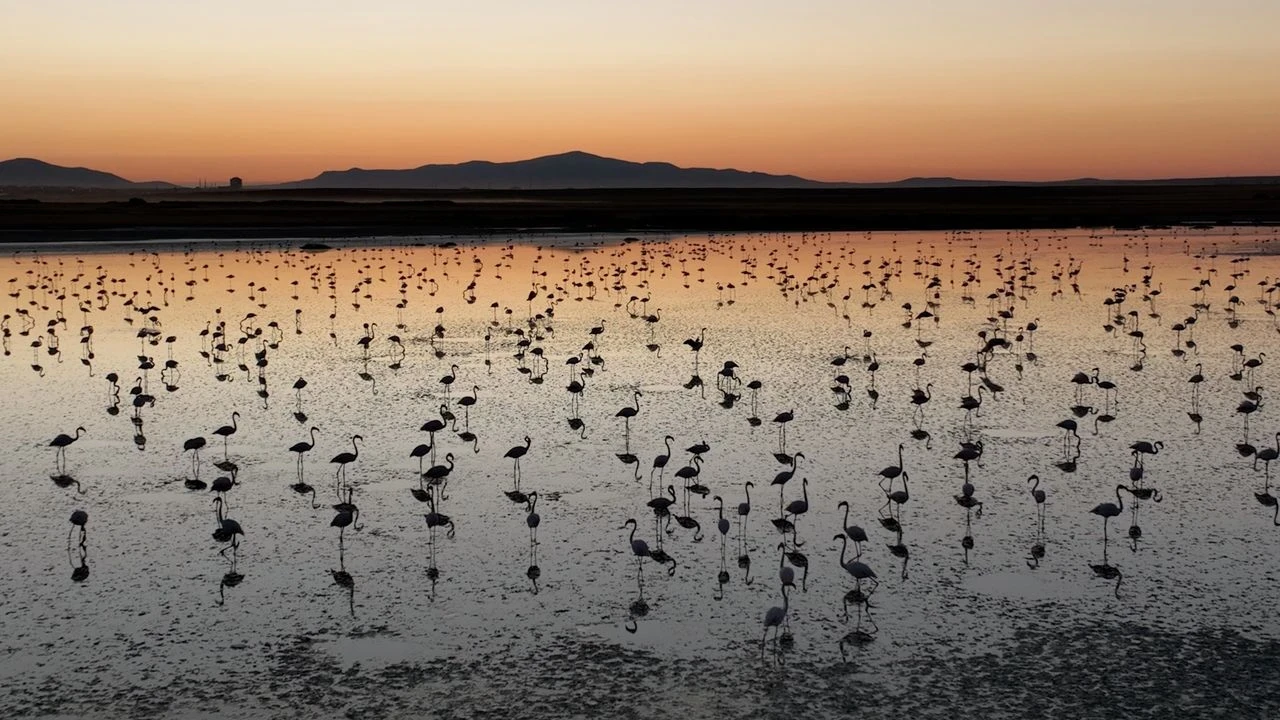Flamingo conservation success: 4,300 nestlings survive at Tuz Lake
 Flamingos at the Tuz Lake in Türkiye. (AA Photo)
Flamingos at the Tuz Lake in Türkiye. (AA Photo)
The Tuz Lake Special Environmental Protection Area has reported a significant conservation success this year, with no mass deaths among flamingo nestlings.
According to the Turkish Ministry of Environment, Urbanization, and Climate Change, 4,300 flamingo nestlings were identified, marking a positive outcome from ongoing conservation efforts aimed at preserving the flamingo population in Türkiye.
Water supply project prevents mass deaths
Since 2022, Türkiye’s Ministry’s General Directorate for the Protection of Natural Assets has implemented a water supply project to combat the challenges of drought faced by the flamingo nestlings at Tuz Lake.
The project involves pumping water to the “nursery” areas – where the nestlings gather –through a 4-kilometer (2.4-mile) pipeline. Powered by solar energy, these motor pumps have been crucial, especially during the hot and dry month of July, ensuring that the nestlings have access to sufficient water.
The project, which has been in operation for two years, has successfully prevented the mass deaths of flamingo nestlings because of dehydration.
Field personnel have continuously monitored the area to ensure the well-being of the flamingo population.
Over 4,000 flamingo nestlings monitored from air
After completing their incubation period, the flamingo chicks move from their breeding grounds at Tuz Lake to the Konya Canal for feeding.
These nestlings are counted using aerial photography, a method also used to monitor other endangered species in the region, such as the great bustard and the steppe eagle.
‘We took great care of Flamingo nestlings’
Türkiye’s Environment Minister Murat Kurum shared images of the region on social media, expressing satisfaction with the conservation efforts. “Anatolia’s most delicate guests are entrusted to us. This year, we are saying goodbye to 4,300 guests.” he stated, highlighting the success of the conservation of flamingo nestlings.
Professor Dr. Ahmet Karatas, the project coordinator from Nigde Omer Halisdemir University’s Faculty of Science, explained that flamingos raise their young in “nurseries,” where a few adult birds supervise the nestlings while the others hunt.
He noted that four years ago, during a period of mass deaths, the chicks struggled to find water and spread out in search of it.
This year, however, thanks to the project, no mass deaths were recorded, and the flamingos were successfully raised to the point of flight.



